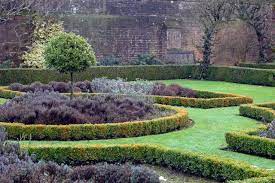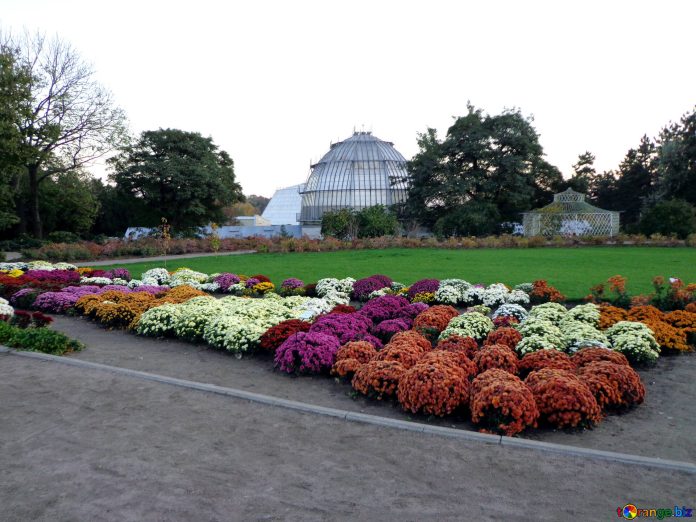There are so many different types of bushes to choose from, and it can be challenging to know which one is the best for your landscaping project. Here is a list of 30 different types of bushes that you can grow in your yard.
25 types of bushes that you can use for landscaping
1. Arborvitae
This evergreen bush grows up to 20 feet tall and has a pyramidal shape. They come in various colors and make a great privacy screen or windbreaker.
2. Blueberry
Grow these bushes if you want small, tasty fruit to eat over the summer. You can grow your blueberries in containers on a balcony or porch too!
3. Boxwood
The traditional green boxwood is a popular choice for hedges and borders.
4. Camellia
This beautiful bush comes in various colors, including white, pink, and red. They grow best in zones 7-9 and make a great addition to any garden.
5. Cherry
Grow these bushes for the small, tasty fruit they produce.
6. Crape Myrtle
If you want a bush with gorgeous summer blooms, look no further than the crape myrtle. AND they grow best in zones 7-9.
7. Dogwood
This flowering bush comes in various colors, including red, white, and pink. They are often used as ornamental bushes and grow well in zones 5-9.
8. Forsythia
This bright yellow bush is a beautiful addition to any garden. Grow it for the gorgeous flowers that come out in early spring!
9. Golden-rain Tree
This flowering tree grows up to 40 feet tall and makes an excellent shade tree for your yard! It does best in zones 8-11 but can grow well in Zone 6.
10. Japanese Barberry
Look no further than the Japanese Barberry if you want a tree-like bush with pretty spring blooms! It grows well in zones 3-7.
11. Nellie Stevens Holly
This large bush is often used as a privacy screen or hedging material for gardens and landscaping projects.
12. Ninebark
This bush is an excellent choice if you want a low-maintenance landscaping project. It grows in zones 2-8 and comes in various colors, including green, white, and pink.
13. Pee Gee Hydrangea
This popular hydrangea comes in many different colors, including blue, pink, and white. It makes a pretty border plant or addition to any garden!
14. Red Twig Dogwood
These plants are an excellent choice if you need landscaping with bright red blooms. They grow best in zones 3-7 and even in Zone 2.
15. Russian Olive
This drought-tolerant bush is an excellent choice for areas that get lots of suns.
16. Weigela
This flowering shrub is one of the only deciduous varieties on this list. It grows best in zones 4-8 and can grow up to 5 feet tall!
17. Witch-hazel
This fragrant bush blooms in the fall and comes in a variety of colors, including yellow, orange, and red. It grows well in zones 4-8.
18. Yew
This sizeable evergreen bush is often used for hedges and borders in gardens and landscaping projects. It grows best in zones 5-9 and comes in a variety of colors, including green, gold, and bronze.
19. Boxwood Topiary
If you want a topiary bush that is easy to care for, choose a boxwood! They can be pruned into different shapes and only need occasionally watered.
20. Carissa
Carissa’s are small flowering shrubs that grow well in zones 8-11. They come in a wide variety of colors, including pink, white, yellow, red, and purple.
21. Coral Honeysuckle
Coral honeysuckle is an evergreen vine with bright red blooms that attract hummingbirds! It does best if it gets lots of sun and heat.
22. Desert Rose (Adenium)
These exotic-looking bushes come in many different varieties and make excellent houseplants or garden additions! They do best in warm climates but can also grow well indoors if you live in a colder climate.
23. Gardenia
Gardenias are fragrant white flowers that grow well in zones 7-10. They make a beautiful addition to any garden or landscape project!
24. Hydrangea
Hydrangeas come in many colors, including pink, blue, and purple. They are often used as border plants or additions to gardens.
25. Ixora
Ixora’s are small flowering shrubs that come in a variety of colors, including pink, white, yellow, red, and purple. They grow best in zones 8-11.
Final Words
If you want your garden or landscape project to look beautiful all year long, it’s essential to choose the right type of bushes. These are the 30 bushes that you can use for landscaping to view an astonishing view in your yard.

FAQs
A. There are several differences between the two. A shrub usually has woody stems that are smaller than 2ft in height, within which there is an apparent main trunk or several main branches. Shrubs are often multi-stemmed but less dense, whereas bushes are very dense with no apparent stem or trunk.
Some people distinguish that shrubs are actively growing to fewer than 6ft, whereas bushes are taller with an undefined trunk. A small tree can be considered a large shrub or a small tree can be considered a small bush, but there is no specific dividing line between the two.
A. Tree experts recommend only pruning away dead, diseased, or damaged branches which are crossing other branches or rubbing against each other because this will improve the structure and health of the tree. If you have to remove whole branches, it is best to cut them back to ‘branch unions,’ which are slightly raised knuckles on either side of the trunk where the branches join it. This will ensure that there is no damage to the tree. It also allows several large wounds to heal over and allows live wood to continue growing so that eventually strong callous forms across the wound and seals it up nicely.
With shrubs, it is generally recommended to cut them back by no more than a third of their length, as this will promote new growth.
A. This depends on the type of plant, the time of year, and the climate. In general, newly planted trees and shrubs need to be watered every day for the first week, then every other day for a month, and then once a week for the next two months. After that, you can water them according to how dry the soil is. If the soil feels dry at a depth of 1 inch, it needs watering.
Apart from this, if you are interested to know more about Bush Landscaping then visit our Landscaping category.






